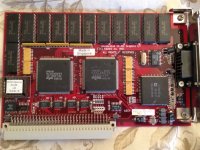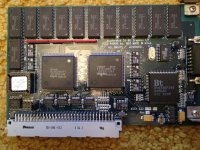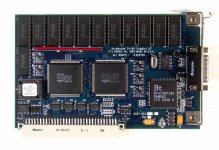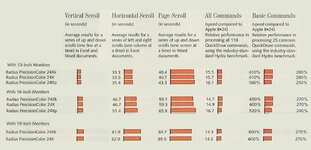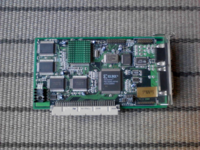olePigeon
Well-known member
So I happen to have a Radius 24X, 24XP, and 24XK.
According to LEM, the 24XP appears to be the budget card. It doesn't do the higher 1152 resolution, though it it's still 24-bit and accelerated.
The 24X and the 24XK, on the other hand, I can't tell the difference. I tried both on my IIci, and I think the 24XK is faster. It may just be because it's red and looks awesome compared to the plane Jane 24X. The 24XK seems to play nicer with my LCD, too. On the 24X I have some convergence issues when in B&W mode, but the 24XK doesn't have the issue. The 24XK also has a newer ROM than the 24X.
The 24XK seems to play nicer with my LCD, too. On the 24X I have some convergence issues when in B&W mode, but the 24XK doesn't have the issue. The 24XK also has a newer ROM than the 24X.
I did notice one nifty thing about them, though, and that is Radius used different colored PCBs for each card. They look pretty cool all next to each other. The 24X is Green, the 24XP is Blue, and the 24XK is Red.
According to LEM, the 24XP appears to be the budget card. It doesn't do the higher 1152 resolution, though it it's still 24-bit and accelerated.
The 24X and the 24XK, on the other hand, I can't tell the difference. I tried both on my IIci, and I think the 24XK is faster. It may just be because it's red and looks awesome compared to the plane Jane 24X.
I did notice one nifty thing about them, though, and that is Radius used different colored PCBs for each card. They look pretty cool all next to each other. The 24X is Green, the 24XP is Blue, and the 24XK is Red.


